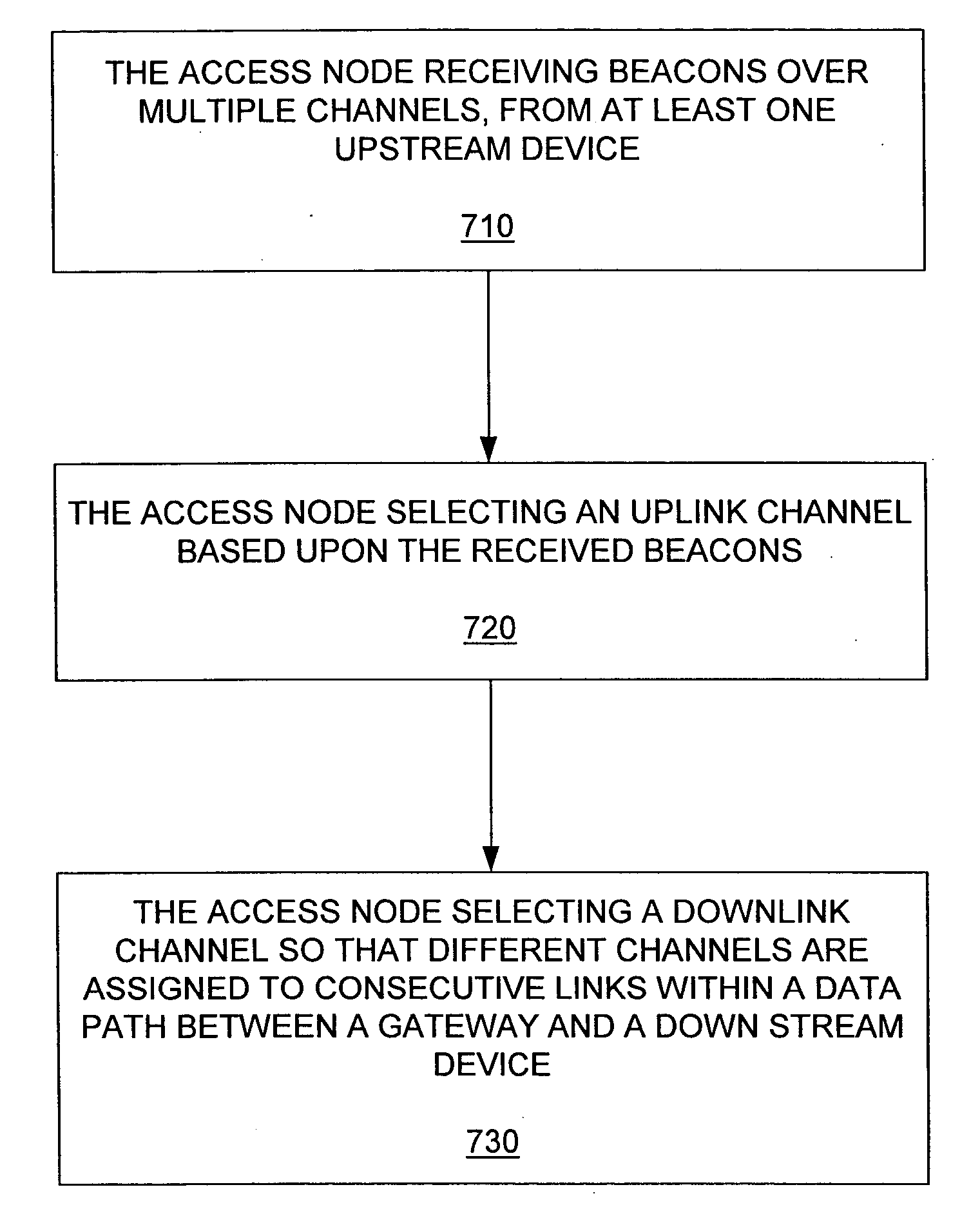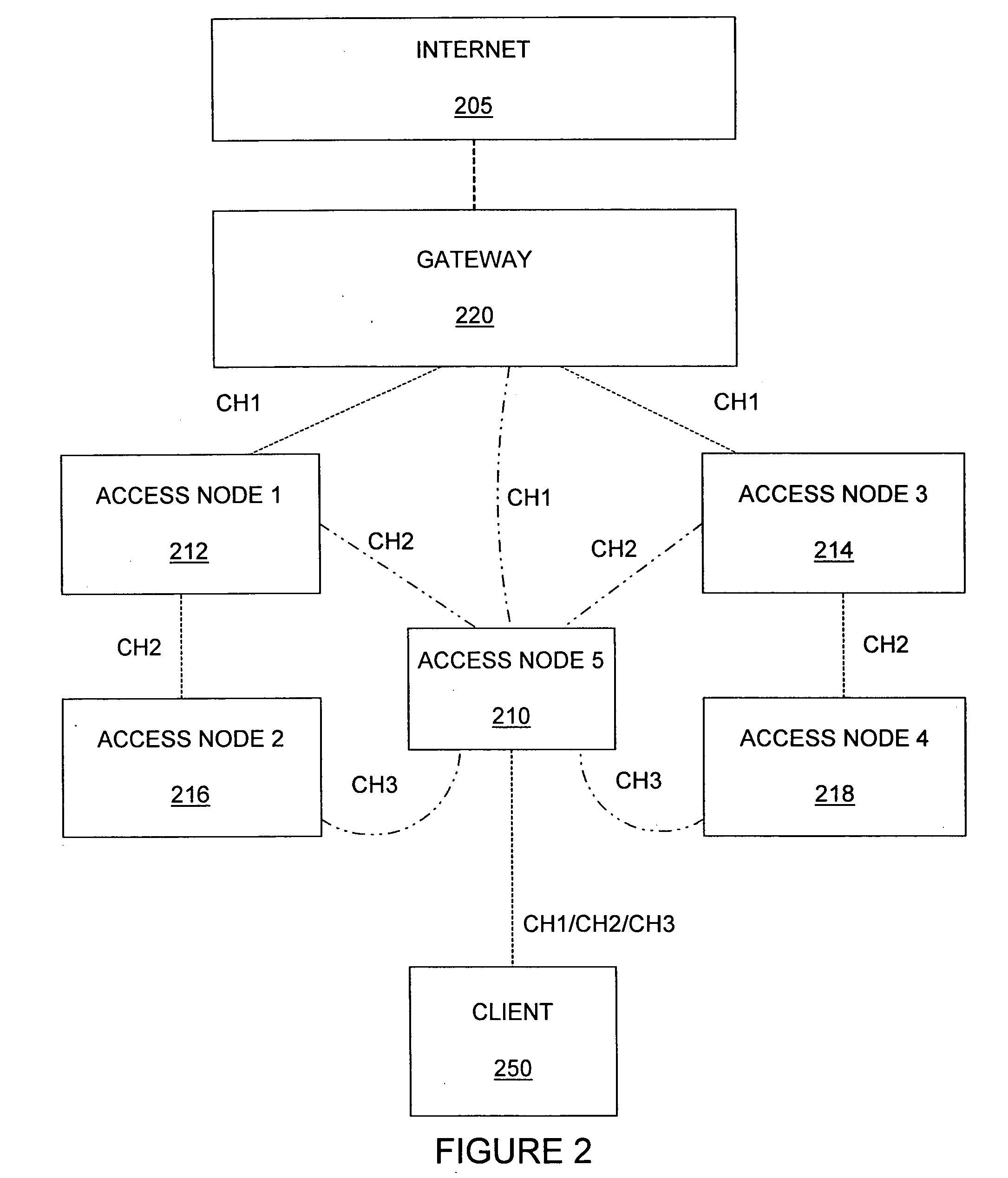Channel assignments within a mesh network
a mesh network and channel assignment technology, applied in the field of network communication, can solve the problems of not being able to use, not having prior knowledge of the direction of a given wireless device, and restrictive directional links
- Summary
- Abstract
- Description
- Claims
- Application Information
AI Technical Summary
Problems solved by technology
Method used
Image
Examples
Embodiment Construction
[0026] As shown in the drawings for purposes of illustration, the invention is embodied in a method and apparatus for assigning channels to links of access nodes within a wireless mesh network.
[0027]FIG. 2 shows a mesh network depicting an access node 210 receiving beacoris over multiple channels, allowing the access node 210 to make an uplink channel selection. The mesh network includes a gateway 220, access nodes 210, 212, 214, 216, 218, a client 250, and a network 205.
[0028] The gateway 220 of FIG. 2 is an originator of beacons. The gateway 220 can be wire connected, or wirelessly connected to the network 205. The beacons are routing packets that carry information about routing paths. The beacons are transmitted from the gateway 220 for reception by the access nodes. Access nodes that are able to receive the beacons from the gateway 220, can route data to the gateway 220 if the access node selects the gateway 220 over other gateways that also transmit beacons (which can be over...
PUM
 Login to View More
Login to View More Abstract
Description
Claims
Application Information
 Login to View More
Login to View More - R&D
- Intellectual Property
- Life Sciences
- Materials
- Tech Scout
- Unparalleled Data Quality
- Higher Quality Content
- 60% Fewer Hallucinations
Browse by: Latest US Patents, China's latest patents, Technical Efficacy Thesaurus, Application Domain, Technology Topic, Popular Technical Reports.
© 2025 PatSnap. All rights reserved.Legal|Privacy policy|Modern Slavery Act Transparency Statement|Sitemap|About US| Contact US: help@patsnap.com



